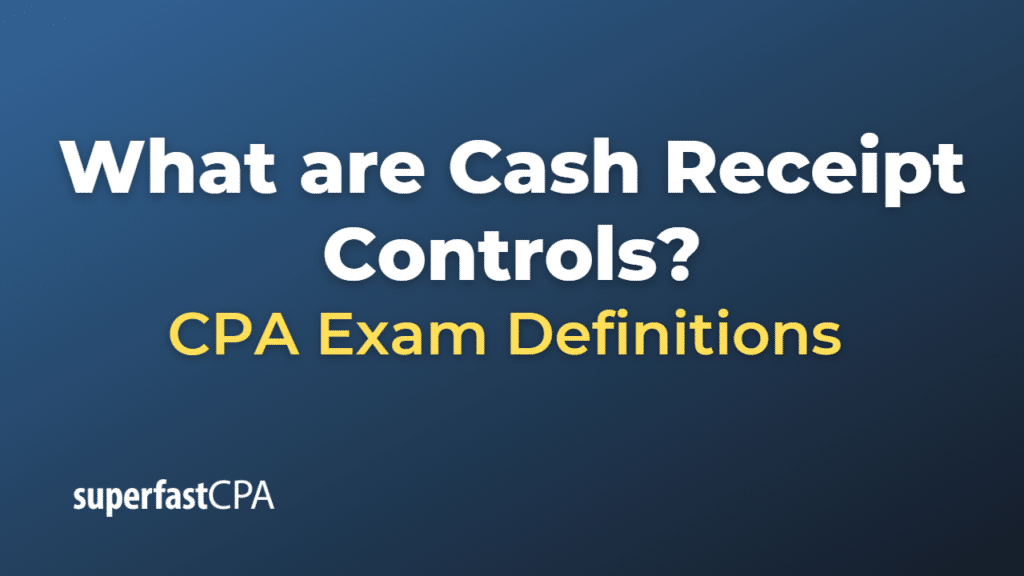Cash Receipt Controls
Cash receipt controls are procedures and processes implemented by businesses to ensure the accurate and secure handling of cash transactions. These controls help to minimize the risk of theft, fraud, and errors in recording cash transactions. Cash receipt controls are essential for maintaining accurate financial records, ensuring cash is safely deposited, and promoting transparency and accountability in financial transactions.
Here are some common cash receipt controls:
- Separation of duties: Assign different employees to handle different aspects of cash transactions, such as receiving payments, recording transactions, and reconciling cash. This helps to prevent fraud by making it more difficult for a single employee to manipulate the cash handling process.
- Authorization and approval: Require management approval for transactions above a certain threshold or those involving refunds or discounts to ensure that they are legitimate.
- Secure cash storage: Keep cash in a secure location, such as a locked cash register or a safe, to prevent unauthorized access or theft.
- Regular cash counts and reconciliation: Conduct regular cash counts and compare the amounts with recorded transactions to identify discrepancies and ensure that cash is accurately accounted for.
- Issuing receipts: Provide customers with a receipt for each transaction to serve as proof of payment and create a paper trail for financial recordkeeping.
- Timely deposits: Deposit cash received into the bank on a regular basis to minimize the risk of theft or loss.
- Employee training: Train employees on proper cash handling procedures, the importance of cash receipt controls, and how to identify and report potential issues or discrepancies.
- Monitoring and review: Regularly review cash handling procedures and controls to ensure they are effective and make any necessary adjustments to address weaknesses or areas of concern.
By implementing cash receipt controls, businesses can reduce the likelihood of theft or fraud, maintain accurate financial records, and foster a culture of accountability and transparency in their financial transactions.
Example of Cash Receipt Controls
Let’s consider a retail clothing store that implements cash receipt controls to ensure accurate and secure handling of cash transactions.
- Separation of duties: The store manager assigns different employees to handle different aspects of cash transactions. One employee is responsible for receiving cash payments from customers, another employee records the transactions in the accounting system, and a third employee reconciles the cash at the end of the day.
- Authorization and approval: If a customer requests a refund or a discount, the cashier must obtain approval from the store manager before processing the transaction.
- Secure cash storage: The store uses a locked cash register to store cash during the day. At the end of each day, the cash is transferred to a secure safe in the manager’s office.
- Regular cash counts and reconciliation: The store manager or a designated employee counts the cash in the register at the end of each day and compares it to the recorded transactions to identify any discrepancies or missing funds.
- Issuing receipts: The cashiers provide customers with a receipt for each transaction, documenting the items purchased, the amount paid, and the method of payment.
- Timely deposits: The store manager deposits cash received into the company’s bank account daily, minimizing the risk of theft or loss.
- Employee training: All store employees receive training on proper cash handling procedures, the importance of cash receipt controls, and how to identify and report potential issues or discrepancies.
- Monitoring and review: The store manager regularly reviews cash handling procedures and controls, making adjustments as needed to address weaknesses or areas of concern.
In this example, the clothing store uses cash receipt controls to minimize the risk of theft, fraud, and errors in recording cash transactions, ultimately maintaining accurate financial records and promoting transparency and accountability in its financial transactions.












